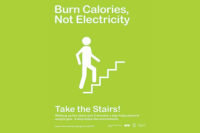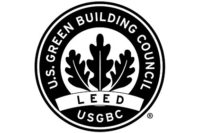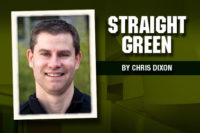I was recently introduced to a graph showing the number of LEED building registrations from its beginnings in 2000 through 2012, which was startling to say the least. The graph shows a modest increase in registrations over the first five years, a plateau in the sixth, a meteoric rise until 2009, and then a precipitous drop. For all the feel-good green press out there about green building certifications, I would have guessed this graph to show a solid, steady growth trend from the beginning. Instead, the graph shows the classic sharp rise and equally sharp decline that defines a fad.
Trend vs. Fad
Products fail or succeed depending on how well they do over the long haul. Products that rise quickly in popularity initially and then fade just as fast typically do not endure. This phenomenon is known as a fad. The Hula Hoop, Rubik’s Cube and Macarena are examples of fads. Trends, by contrast, take hold slowly and steadily until widely accepted and/or practiced and eventually become part of the cultural makeup of a society. Blue jeans (around for 150 years), cell phones, and vaccinations are examples of trends. The graph of a trend looks very different than that of a fad and easily discernible. Does the fad-like graph of LEED registrations predict the end of green building certifications? Why the big drop? The reasons are many.
Increased Effort
As LEED has evolved, effort and cost in achieving certification has increased. It has become more and more difficult to get those all-important points for certification as the minimum requirements have been ratcheted up and more and more prerequisites have been added. Some of the most significant changes occurred when LEED 2009 was introduced, and the graph seems to correlate with the rush of registrations prior to the sun-setting of LEED Version 2.2. In addition to ramping up the minimum point threshold requirements, LEED 2009 introduced a mandatory requirement that owners provide building energy and water use documentation after occupancy as well as a new prerequisite for water consumption (previously awarded a point in v2.2). LEED v4 introduced, by my count, an additional nine prerequisites to the rating system over LEED 2009. Prerequisites in LEED are a deal breaker for many building projects, and the way LEED works, if you do not meet even one, you cannot obtain certification.
Increased Cost
The internet is filled with information about how much LEED costs, and how much these costs have increased over the years. One example, of many, is Milwaukee’s Urban Ecology Center, which didn’t become certified “because it could have added as much as $75,000 to the cost, just for the paperwork,” according to Ken Leinbach, the center’s executive director. In 2010 the LEED registration and certification fees went up, nearly double in some cases. In an article “It Isn’t Easy—Or Cheap—Being Green: LEED Standards Are Expensive, Ineffective,” the New York Timeswas attributed with the statement “that LEED certification adds as much as 20 percent to constructions costs.”
Unfulfilled Performance Promises
There are more and more studies available everyday highlighting an ugly little secret that LEED certified buildings are not performing as claimed or predicted by the LEED rating system and USGBC. A recent study, “Energy Consumption Evaluation of U.S. Navy LEED-Certified Buildings” found that 11 LEED-certified USN buildings “did not achieve a 30 percent savings in electricity consumption, while seven of nine met the water consumption savings requirements set in place by EO 13423. Furthermore, this research concludes that the majority of the USN LEED-certified buildings actually showed more electricity consumption than the national averages as published by the Commercial Building Energy Consumption Survey.”
In an article by Alexis Kurtz, “Hear and Now: Avoid the Number One Complaint about LEED-certified Buildings,” the author begins with the statement, “Studies have shown that acoustics is the #1 complaint of respondents to post-occupancy surveys of LEED certified buildings. This bears repeating: studies have shown time and again that acoustics is the #1 complaint of respondents to post-occupancy surveys of LEED certified buildings.”
In the New Republicarticle “Bank of America’s Toxic Tower New York’s “Greenest” Skyscaper is Actually its Biggest Energy Hog,” the author states that the LEED Platinum-certified building “produces more greenhouse gases and uses more energy per-square-foot than any comparably sized office building in Manhattan.” The data used in making this statement comes from Energy Star Energy Performance Rating data for 953 office buildings in New York City, made public as a result of New York City’s local law 84. That same data was meticulously analyzed by Physics Professor John Scofield who concludes in his study that, “With regard to energy consumption and GHG emission the LEED-certified buildings, collectively, showed no savings as compared with non-LEED buildings.”
Crossing the Chasm
Perhaps the big drop in registrations are simply part of a larger evolutionary process toward market acceptance of this unique green building certification market. While the graph certainly appears very similar to that of other well-known fads, is there another explanation? A 2006 UCLA paper “Evaluating the Diffusion of Green Building Practices” thinks so. The paper’s stated purpose is to “evaluate the diffusion of green building” and provide recommendations to “broaden the adoption of green building practices.” The paper finds that “the majority of real estate professionals are not yet convinced about the legitimacy and economic benefits of green building and LEED certification” and concludes that the green building industry has reached “The Chasm.”
The Chasm is a reference to Geoffrey Moore’s book Crossing the Chasm: Marketing and Selling Disruptive Products to Mainstream Customers.The Chasm is defined as, “that gap between the early adopters of something promising but unproven, and widespread adoption by pragmatists going with the herd after the product or technology has been proven.” The paper states that in order to cross this chasm to broadly expand adoption, “the USGBC and other government stakeholders must work with educational and trade institutions to improve communication and education, standardize green building certification further, market successes in the government and education sector, and kick-off new programs for the residential real estate market.”
Conclusion
Will LEED registrations make a comeback? Is LEED just a fad, or is it simply “Crossing The Chasm” into widespread adoption? It will be interesting to see what impact LEED v4 will have on LEED registrations (delayed twice by the USGBC, now to October 2016) given that LEED v4 is significantly more difficult to certify to. It will also be interesting to see if the drop in LEED registrations will open the door to competing green building rating systems like the Green Globes, a new and improved version of which is scheduled for public release this summer.
Perhaps the public has simply stopped believing in green building certification, and regards it simply as a marketing gimmick without any proven corollary performance benefit. As an Edina, Minnesota official stated in the Builder’s Legal Counsel Blog article “Is LEED Too Expensive? Cities Skip The Plaque, Build Their Own Metrics,” “Why spend [$50,000 to $80,000] simple to get a plaque on the wall saying this is a green building?”







